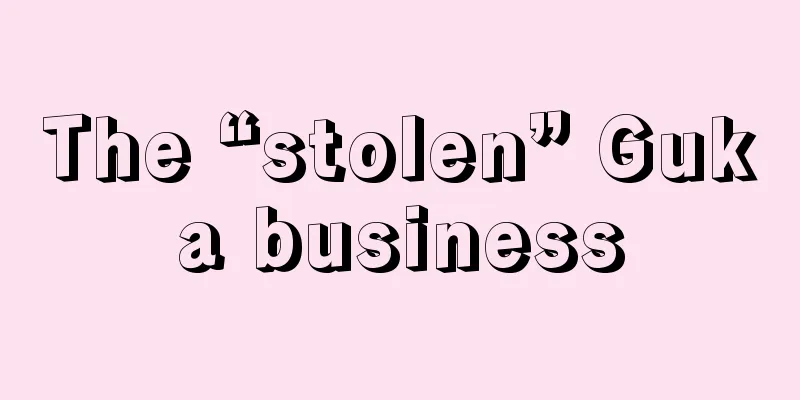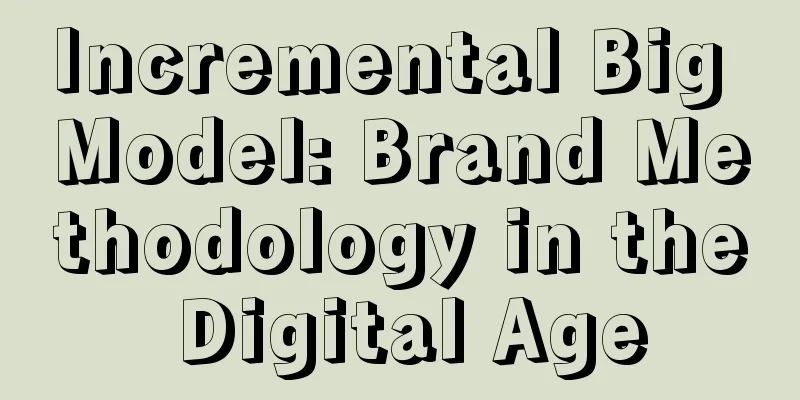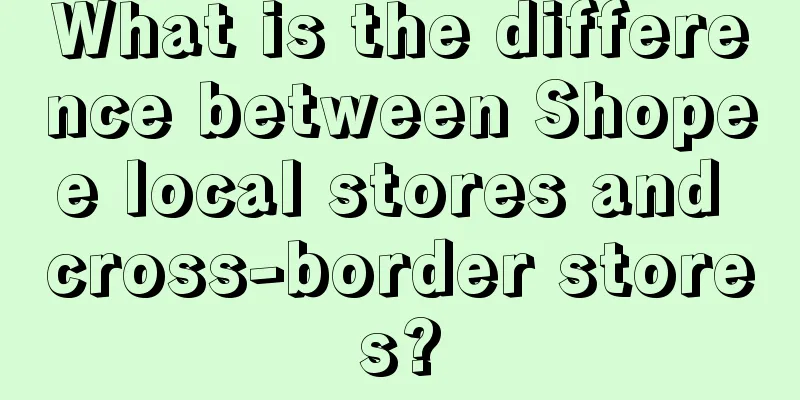Improving user experience starts with brand setting

Most brands may have encountered these two problems to a greater or lesser extent.
This lack of understanding is reflected externally and internally, and the two are interrelated. But the users are innocent, so what exactly went wrong? In the situations I have come across, problems often arise in two dimensions. 1) Incorrect expression: The brand has something it wants to express, but it is not unified and clear. A low-alcohol fruit wine brand wanted to convey the drinking culture of women, but neither the internal team nor the users had a clear understanding of how to define this culture and how to express it, which led to confusion in brand tone and visuals. Then it became a national style and hired a national style spokesperson. The brand assets were in a long-term chaos and had no accumulation. It was also difficult for the partners to make decisions on some specific issues. A new skincare brand communicated with us last year. It felt that its brand system was not unified and the spokesperson was not suitable for the core group. At that time, I asked them what the brand wanted to convey. His answer was happiness. This concept is obviously fine, but the problem is that there is no definition of "happiness". How is your happiness different from that of McDonald's and Coca-Cola? What kind of happiness is it in what scenario? Is it the happiness of a sincere and subtle smile, or a more refreshing laughter with sports and sunny attributes? The more concepts that need to be interpreted, the more clear settings are needed, otherwise the team will not understand and users will naturally not feel it. 2) Another problem is that it is difficult to reach a consensus among product, brand, and sales parties. Everyone has their own positions and ideas. Today he wants to make this product, and tomorrow she feels that she must develop that product. It is difficult to coordinate internal resources. A home cleaning brand, the partners in charge of operations hope that the product department will continue to launch new products to stimulate the needs of different users and scenarios. Their basis is data and market demand. How to balance from the perspective of the overall brand is a problem that founders often struggle with.
Everyone may be right, but they just haven't worked together to set up the various brand sections. This is just like on-the-job training, which requires some rules and restrictions to let everyone know that the various sections of our brand should be coordinated in this way. Only when everyone is clear about it can a synergy be formed, and then the user experience and feelings will be good in the end. 01 Brand setting determines short-term corporate strategy, and corporate strategy determines internal resource allocationBrand setting is based on user experience, that is, how the brand wants users to feel when they see and experience the brand and products, and therefore a specific plan of what needs to be done to achieve the goal. It is like setting a person's code of conduct and determining the status and position of different sections within the team. This is quite similar to the professions and roles when playing games. Some games will have a hexagonal ability index chart at the beginning. Some professions are powerful in the middle and late stages, or have strong output but slow attack speed. This will make the focus of training different, and the equipment resources invested in different periods will also be different. For example, for Guanxia, content is the core strategy of the brand. The resources it has invested in language, vision, space and public accounts far exceed those of many brands. And it has specific requirements and settings for its own content, which will be reflected in its team. When recruiting, it needs to know the partners it wants, what they need to recognize, and what experience and skills they have, so that the final output is what Guanxia wants. Guanxia is one of the few companies that can invest resources to record the store construction process like a documentary before the brand experience store opens, and describe it with such emotion and quality. This event itself is a short-term event for the brand. While it promoted sales, it was also a good opportunity for brand building. This can be achieved because of the brand's settings in the official account and content, and the long-term attention it pays, which leads to such resource allocation. The team is clear about the purpose and significance when doing this, which leads to such results. It's not that other brands can't do it, but when you look at this one thing alone, without standing from the overall perspective, or even the brand strategy perspective, you don't think that this is something I must do. It's like seeing good products and content from brands in the industry, forwarding it to team partners, but then thinking that maybe I don't have the opportunity to do it, the brand loses this opportunity, whether in the short term or long term. Brand setting is like making a product and SOP, which requires gradual testing to form standards. The actual settings are more complicated than what I listed, and there will be pictures or videos to help explain. Such a discussion will gradually make everyone's understanding of the easily vague concepts such as brand concept and positioning clear and unified. 02 How to set up a brand?1. Concept and cultural settingA brand’s understanding of its own philosophy and culture determines the upper limit set, and also basically determines the upper limit of user experience. We often see that many brands have their own ideas and culture that they want to convey, but they are either very vague and the team itself cannot explain them clearly, or they become gradually confused during the rapid development of the brand and need further clarification. Many tea brands want to convey oriental, Chinese and national culture, but they do not further explain the culture, resulting in a superficial and stereotyped sense of culture being conveyed to users. I will provide you with a thinking framework using the two settings of "culture" and "concept". What part of traditional Chinese culture does the national style and oriental culture that the brand wants to convey come from? Are there any relevant classics or historical stories? What kind of meaning, concept and values are reflected behind it? What independent insights does the brand have on the culture it has chosen, or what ideas does it want to convey to users through this culture? Does it have any connection with modern people’s life and work? What is its practical significance? What is the brand's definition of "happiness"? Is it the happiness of a sincere and subtle smile, or a more hearty laugh with a sporty and sunny attribute? What kind of happiness is it in what kind of setting? Is it when you are alone or with others? At home or in a public place? Is it enjoyed alone or shared with friends? What type of users is this kind of happiness for? What characteristics do they tend to have? What things in life can easily make them happy? The clearer we think about these questions, the easier it will be for the team to understand what our brand is trying to convey. In fact, often in the introduction of some brands, you can see its understanding of its own philosophy/culture. I usually like to collect some well-written ones.
With a clear brand setting and concept, we will be more clear about what kind of products we should set up to deliver value. 2. Product SettingsIn the entire brand setting, the most important thing is product setting . It is the brand's profit point and the core value provided to users. Because of this, there are often disagreements within the team. Some brands sell their product lines based on what the supply chain and R&D have produced, without a complete structure and ideas, so they are prone to short-term following and losing their way. At this time, we should set the entire product line. I currently divide the brand’s products into these seven dimensions. ① In product settings, at least “sales volume and brand products” need to be set. These two lines can satisfy revenue while continuing to deepen users’ understanding of the brand. A best-selling product is one that accounts for the majority of sales in your brand. It is relatively universal and meets the needs of most people. Brands often rely on this product to occupy the category. For branded products , the focus is on embodying the brand concept and attaching the brand's uniqueness to the product. It may also be the brand feeling of multiple products superimposed together. For example, Huaxizi’s air powder, eyebrow pencil and Miaoyin gift box, the former two are mainly sales-oriented, while the latter is brand-driven. The product line structure of Sandunban is relatively complete. I will take its product line structure during Double Eleven as an example. The concept that Sandunban wants to express is "exploring flavors from around the world". If it is just this sentence, it is actually difficult for users to perceive it. But it is actually achieved by: cooperating with pioneers or independent baristas and coffee shops in different regions to develop products, including Yunnan, Japan, Quanzhou and other places. It not only expresses the brand's real "exploration of flavors", but also gives the impression of a professional pursuit of coffee quality. When I received the Sandunban Double Eleven gift box in 2020, what impressed me most was the Planet's Breathing Fragrance Card. The natural scent of a coffee bean producing area somewhere abroad was reproduced on the card, giving me the feeling of "exploring flavors". Such a product setting will enable team members to understand the value and significance of each product while working, which may reduce arguments and allow users to have a comprehensive experience of the brand. ② Product line setting: The best way is to understand the brand as a whole product, in which the products are interrelated. The sales volume is the brand product, and every time a product is sold, the user's impression of the brand will be deepened. In the brand upgrade of Sun Family Pet Food, when we defined the brand as "simple food", we also reshaped the visual system. All products that meet the "simple" principle have a specific yellow "simple food" corner mark on the upper right side of the package. Sun Family's best-selling chicken and duck jerky products, when they appear in front of users in a new way, become branded products. In other industries, brands’ product offerings are multidimensional . For example, for restaurants, space and user experience are products that are as important as food. When we were upgrading Youxiwu’s brand, the scene concept of “Happy Energy House, Eliminate Unhappiness” was an important product that distinguished the Japanese food experience from other brands. Especially for some brand concepts that are relatively abstract, you may not be able to perceive them well just by purchasing physical products . For example, two brands I like very much are Su Ran’s buyer store IN THE PARK and the clothing brand ZUGZUG. IN THE PARK wants to express " public, equal, and open ". What ZUGZUG wants to express is " imagination and creativity from life ". This is indeed the case with the product design styles of both brands. When you only buy one piece of clothing or one single item, it is difficult to fully understand the brand concept, so both brands use exhibitions, activities, and magazines to let you experience it. In these brands, all products are interrelated, and what users feel and experience is a complete brand product. 3. Language settingsLanguage is the lowest-cost way to establish user perception of a brand. Many brands often feel that they are vague and lack personality. Vision and language each account for half of the reasons. However, language, as the most common and high-frequency brand communication method, is ignored by many brands. In our habitual cognition, we often think that the slogan is the language of the brand. In fact, it is just a condensed sentence. The language used by the brand to communicate with users on a daily basis is far richer than the slogan. The language setting is even more of a daily language method of contacting users through high-frequency words such as packaging, official accounts, and self-media platforms. ① Before setting, we must first clarify the tone and style of the brand language, which needs to be highly consistent with the concept and tone of the brand itself. For example, the "body sensing technology and basic models" expressed by the Bananain brand are indeed precise and concise in language, and even have a sense of technology. ② If you think of the brand as a person, the language setting is the person’s way of speaking and habits, even his catchphrase. He may be a taciturn person who keeps a distance. Every time he speaks, he is concise, to the point, and without any nonsense, leaving you a lot of room for imagination. He may also be gentle and considerate, always considering things from your perspective, speaking softly and sincerely, and being considerate, making you feel warm and secure. The way of speaking not only indicates how the brand should speak, but also reminds us what the brand should not say. We often see blatant discounts, promotions, internet terms and hot events in tweets from some brands’ public accounts. Objectively speaking, some brands’ tone is not suitable for saying these things, and if they really have to say them, they should be converted into appropriate language and content. ③The last and most important thing is language recognition, which can be formed through long-term control. List 2 elements: word count and verbs. New brands such as Wenxian use four words in almost every public account push. You may not notice it once or twice, but over time, combined with your sense of language, you will form brand language recognition. Big brands like Nike often use verbs in their advertisements.
We set the language through the tonal style, speaking method and text recognition. From the copywriting on the brand packaging to the customer service words, we make language the most commonly used tool for users to communicate. 4. Space SettingSpace efficiency first, or experience first? Some brands don’t think this through before selecting a location, designing and decorating. Within Heytea, different stores have different levels. The decoration cost of the most expensive experience store can reach 3-5 million. Therefore, we need to define the significance of space for the brand from the beginning. If the current goal is to increase the number of stores and increase efficiency, then we should consider how to standardize and modularize? How to renovate and replicate faster? What area is most efficient? What kind of location and rental cost is appropriate at this stage? We have designed spaces for more than one project. Initially, the focus was on experience, which gradually shifted to efficiency in the process. The final result was that we did not touch on either side and wasted costs. 5. Experience SettingsExperience may be the most likely opportunity for a brand to leave the most lasting impression on users outside of physical products. Before setting up, you must first understand what experience links occur between users and brands. You can write down the entire brand experience process on a whiteboard from the user's perspective, whether online or offline, and then judge at each experience point what the user will feel. At this time, we look back and think about what the brand wants users to feel. In what aspects do users feel it? Which aspects will cause trouble to users and affect their overall impression of the brand? After sorting out the experience process, we can make targeted settings and design peak experience points - the places where users are most impressed during a user experience. It could be the way the packaging is opened, it could be a fixture in the store, or it could be the appearance of the product itself. 03 Brand is a long-term creation for usersTwo years ago, there was no such thing as brand setting in our company’s services. After the strategic direction was determined, we roughly interpreted the brand’s story, products, vision, language, activities, etc. in a more conceptual way, so that both parties could have a deeper consensus on the overall brand system. Based on the consensus, we then entered the actual visual and language creation stage. But for various reasons, when our entire brand plan is implemented, the result is often that the brand will gradually change and deviate from the shape we previously defined together, and in serious cases it may even affect the business model. No matter how precise the strategy and differentiation are, if there is no creative way to communicate and express with users on a continuous basis, they will only remain in the company's high-level meetings. Brand is a long-term creation for users, and brand setting is a creation execution setting that starts from the end. It is based on strategy and positioning, telling partners in the group what attitude and route our brand should take to reach the end, and is an important reference for brand actions and decisions. For brands that have transcended cycles and have users who have a relatively consistent experience with them for a long time, what kind of brand management have they used to achieve a high degree of unity? Maybe there is indeed a set of management tools like "brand settings" internally, but I don't know. I hope this article can help you. Author: Shaokang loves brain burning Source: Shaokang Blake (ID: shaokang92) |
Recommend
Is Alibaba's cross-border e-commerce easy to do? How to do it well?
Alibaba also has cross-border e-commerce platforms...
Loneliness has become a business!
How did the loneliness economy model come about? U...
What are the reasons why Amazon’s targeted ads do not generate orders despite high clicks?
On the Amazon platform, many Amazon sellers don’t ...
Looking back at this year’s 618 battle: Is there any other way out besides hitting low prices?
This article mainly discusses the 618 e-commerce w...
Analysis of the hot articles in Xiaohongshu in October
What are the hot articles on Xiaohongshu in Octobe...
With annual revenue exceeding 20 billion and tens of millions of fans across the entire network, how does the national snack brand "Want Want" develop its private domain?
This article mainly analyzes the traffic matrix, p...
Xiao Yangge's comeback failed again
After a series of turmoil, Xiao Yangge, the former...
Is Shopify the same as Shopee? Is Shopify B2C or C2C?
There are many cross-border e-commerce platforms o...
Is the social recommendation of video account a false proposition?
Initially, the video account was launched in the f...
After the GMV of the first live broadcast exceeded 100 million, why did Tai Er Pickled Cabbage Fish become the center of attention?
Recently, the "old internet celebrity" i...
How to choose products for e-commerce
In the field of e-commerce, product selection is a...
How is Amazon's new product period calculated? What are the rules for the new product period?
Amazon is actually the same as other platforms. It...
"Return rate" becomes a new challenge for Double 11
As the Double 11 Shopping Festival approaches, com...
Micro-short dramas are heading towards mini programs. How will the traffic business start the second half?
The form of micro-short dramas fits the trend of f...
Can I cancel my bid on eBay? What are some tips for bidding?
Auctions are a popular way of shopping on the e-co...









